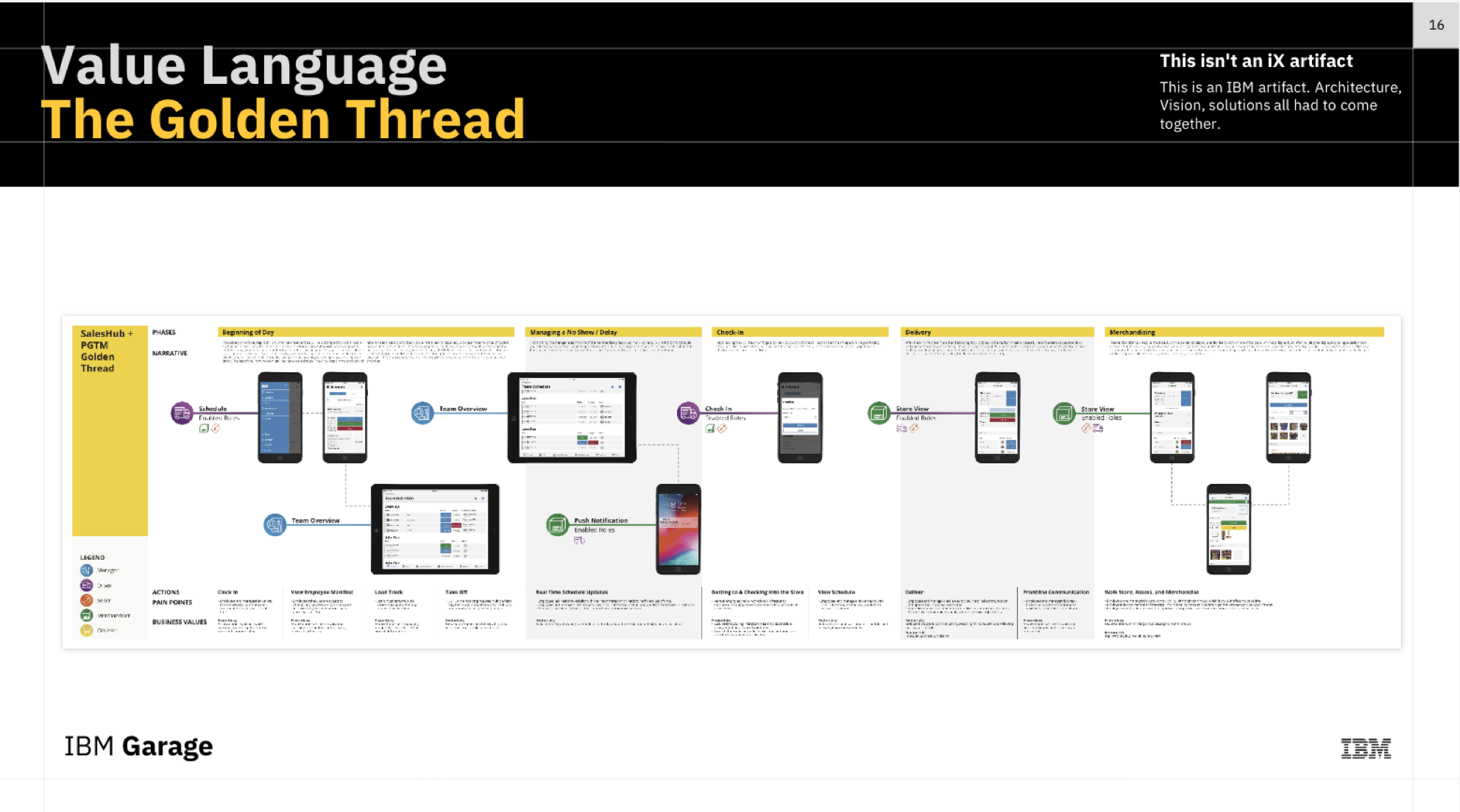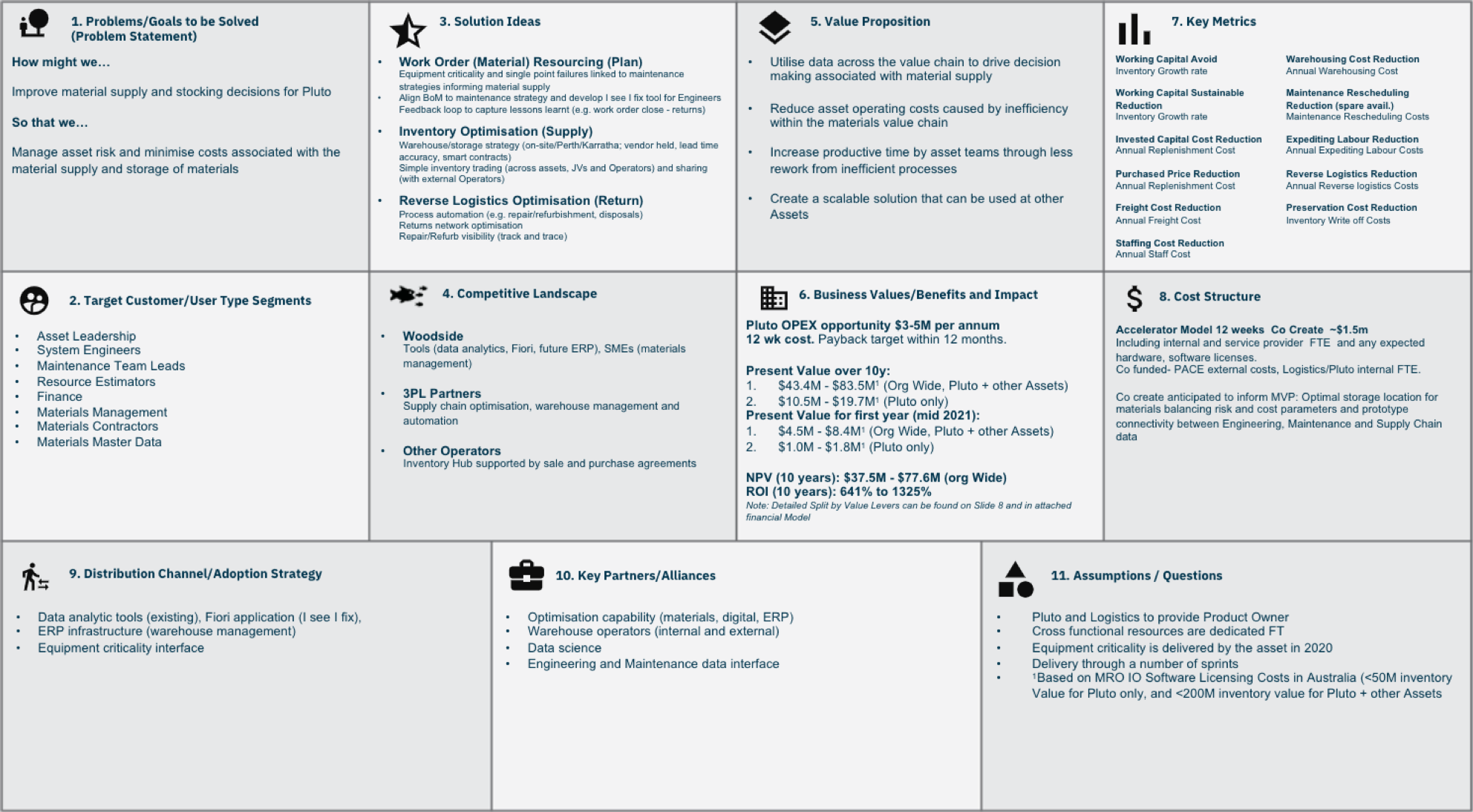“
Disrupt from within before being disrupted from the outside.
Value for your client depends entirely on context, and changes over time; as a result, value conversations with clients should be consistent and ongoing.
When you’re just getting started, understanding your client’s pains and how they think about what’s valuable can be difficult, especially if they’re not used to seeing IBM in a strategic, consultative role. The role of all Garage Practitioners, but especially of Garage Leaders, is to establish empathy with your key client stakeholders and their challenges and use that understanding to shape the course of your Garage engagement.
“
Disrupt from within before being disrupted from the outside.
Mohamed El-Refai
Garage Assets & Platform Leader
The key to understanding how to drive value and manage expectations in a Garage is to make sure you’re addressing real Client problems. Here is a technique for digging deep in conversations with client’s and determining what would bring them value.

DRIIIL
technique
In early conversations with clients, both formal and informal, use of the DRIIIL sales technique can be really helpful. DRIIIL helps you uncover customers needs and define their challenges so that when you present the solution, you are certain that you will have buy-in from your client. Having conversations using DRIIIL will provide you with great insights about how to shape your IBM Garage engagement, where to take your initial workshops, and how to think about the value your client cares about most.
There are 6 steps to DRIIIL
Ask:
“What do you want to get out of this engagement?”
“What’s the most important thing you want to achieve?”
Why it works:
Most people only want to talk about their own objectives. Asking the client to state their objectives is a professional and assertive way to start the relationship off on a good footing. It allows you to tick off all of their agenda points. The customer almost always replies with their biggest problem, need or pain point, which is a great segue into your subsequent questioning.
Ask:
“Tell me about your current set up in regard to…”
“What challenges are you facing in regard to…”
Why it works:
Asking leading questions about their current issues, specific to areas you can help, allows you to quickly pick up on any challenges, problems, or needs they have. It allows you to quickly understand how you can best help them.
Ask:
“Tell me more about that…”
“Explain to me how that…”
“What specifically do you mean by…”
Ensure that you focus on asking open-ended questions at this stage of the process:
“Who… What… When… Where… Why… How….etc “ - also, use of techniques like “5-Whys” can be very helpful here.
Why it works:
Often, a surface level issue is not actually the real problem. Open ended questions help you dive deeper and define the client’s real issues.
These questions also create trust and rapport as the client feels listened to and understands that you care. Much of this information can also be drawn out during Co-Create and by leveraging Enterprise Design Thinking in pre-sales workshops, but asking your client these types of questions in a face-to-face setting not only carries more weight, it is also the best way to understand their perspective. This is especially important if the pain points expressed by high-level stakeholders are different from what you learn from users via research.
Ask:
“How does that affect your business?”
“What impact does that have on your business?”
“How does that impact you – your team, your profit margins, your customers?”
Why it works:
Impact questions are some of the most important to be sure to asl. They shift the conversation away from the problem (the rational business issue) and towards the impact on the client (the emotional, personal impact). Talking about impact allows you to fully understand the bigger picture and open up the emotional side of the brain, a key influencer in building trust with your client.
Ask:
“In your mind, what would help to resolve these issues?
“What does a good solution look like?”
“What return on investment are you looking for?”
Why it works:
If a customer tells you exactly what they want then you know “where the bar is.” Plus, if a customer starts to visualize your solution in their head, they will feel like they have a vested interest in the solutions that come out of the Garage. They are bought into the ideas as they feel like they helped to create them.
Ask:
“So, how can IBM Garage help with this issue?”
Why it works:
Although this may seem like a strange question to ask at the end of the questioning process, it really works. This is because customers tend to respond to this question in one of two ways:
– They tell you exactly how you can help, often pitching your solution back to you
– They say, “I don’t know, you tell me”, essentially putting you in charge of where to lead them
Golden Threads
Creating a value language with clients is another way to ensure you are identifying and measuring relevant outcomes for your client and your IBM Garage. The Frito-Lay Garage uses a tool known as a “Golden Thread” to align around a value language and set strategy for future opportunities at the same time.

A Golden Thread is a user-centric, end-to-end journey map for potential future experiences. It moves beyond more “typical” journey maps by incorporating not only user experience, but also architecture, technology, and processes together into a single artifact. Golden Threads came from a need to develop a common value language with the client and align disparate teams within the Frito-Lay Garage toward a common vision.
Golden Threads are printed on large-format posters and hung around the studio. The Garage holds sessions for their entire team, clients and IBMers alike to review the content and suggest adjustments. Working with clients in this way, with a collaborative artifact to spark conversation, is another way to better understand and agree on what they view as valuable.
Initiative
Assessment tool /
Opportunity Canvas
The Opportunity canvas is a structured approach to organizing information related to the Garage engagement. From identifying the key problems to solve, competitors, and identifying constraints and assumptions, teams can work through each cell and build a consistent, robust view of each initiative they are interested in pursuing. This artifact is commonly used early in the process of a Garage to align on a common vision and help form a Value language with the client.

When it comes to driving towards business outcomes, there are three cells that should be given attention: Value Proposition, Business Value, and Key Metrics.These three areas help teams focus on identifying where they believe the greatest impact may be, what they believe will be the return to the clients business, and how they will track and measure their progress in pursuit of that goal. Completed canvases allow teams to look objectively across initiatives to focus on the top pick(s) that will bring the most return for the clients investment as they serve the goals of the clients organization.